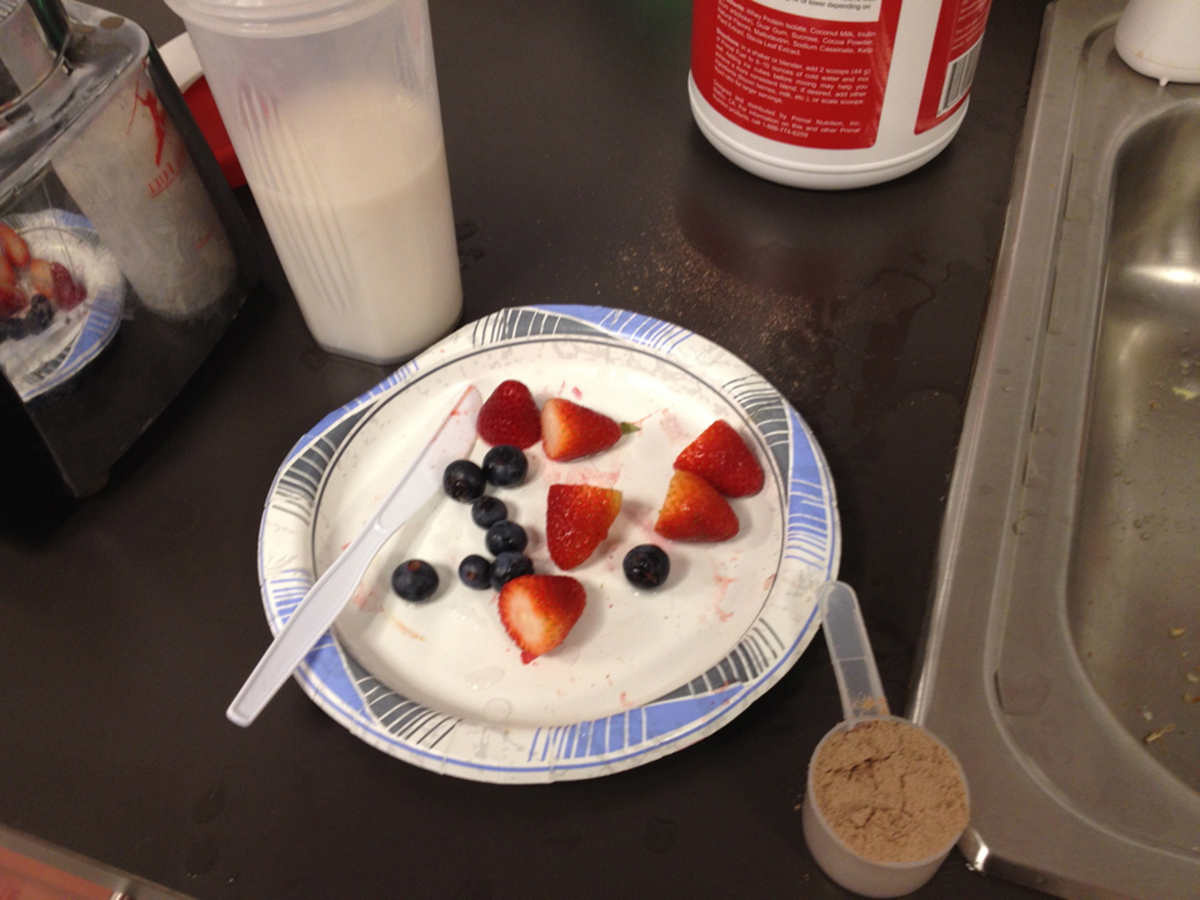Table of Contents
The 2010 Dietary Guidelines state that to manage body weight, one should consume a diet with an appropriate number of calories and contains macronutrients within acceptable ranges.

In line with their guidelines, we therefore recommend no particular diet plan, but encourage our readers to follow these fat-busting tips:
1. Choose High-Quality Protein Sources
If you want to reduce your carbohydrate and fat intake and try a high-protein diet, most experts advise eating more lean beef and pork, fish and other seafood, skinless chicken, eggs, and fat-free or low-fat dairy products such as milk, yogurt, cheese, and fortified soy beverages. Aside from protein, these foods provide you with B-vitamins, vitamin E, zinc, iron, and magnesium. Milk products provide the body with calcium, vitamin D and potassium, which help improve bone health and reduce your risk of high blood pressure, heart disease and type 2 diabetes.
You can also eat plant-based protein sources such as soy-based product, nut, legumes and seeds, which are also known to reduce risk factors for cardiovascular disease when used to replace foods like meat and eaten in small portions. Seafood also contributes a wide range of nutrients to the diet, particularly omega-3 fatty acids, which are associated with heart health. It is best to limit consumption of red meats, which contain a lot of saturated fats.
2. Mind Your Portion sizes
The critical factor that determines body weight. There is no optimal proportion of macronutrients that facilitates weight loss or helps maintain weight loss. Evidence shows that it is not the relative proportion of carbs, fat or protein in the diet that matters, but whether or not you are consuming a reduced amount of calories over time. Therefore, it is more important to eat a balanced diet, but keep your portions small to be able to consume fewer calories.
It may be easier to prepare, serve and consume smaller portions of food at home, but you must also choose smaller portions especially when eating out. Try to share a meal with a friend or take home half of your food instead of consuming a whole meal to reduce your calorie intake.
3. Increase Your Intake Of Low Calorie, High-Fiber Foods
Another way to eat a nutrient-dense, but low calorie diet is to choose foods that are low in calorie but high in fiber content. These include whole grains, fruits and vegetables. To maintain a healthy weight, experts recommend replacing more than half of your total grain intake to whole grains, which are rich in fiber, B vitamins, iron, magnesium, and selenium. Research suggests that a diet rich in whole-grains is associated with a lower body weight and may decrease the risk of diabetes and cardiovascular disease.
Another way to increase your fiber intake and lose weight is to eat a variety of fruits and vegetables. Evidence suggest that consumption of at least 2 ½ cups of fruits and vegetables daily is associated with a reduced risk of heart disease, stroke and certain types of cancer.
See Also: Complete And Incomplete Protein Explained
4. Eat Breakfast Every Day
Scientists have found that people who habitually eat a good breakfast are more likely to lose weight and maintain a healthy weight because eating a protein-rich breakfast can help regulate appetite all day. Some high-protein breakfast options include:
- Whole wheat bread with peanut butter
- Skim milk/Soy milk
- Fruit smoothie with Greek yogurt
- A bowl of fruit with cottage cheese
- A bowl of oatmeal with fruit, nuts and skim milk
5. Keep Track Of Your Eating Patterns And Behaviors
Write down everything you eat and the time you take them to find out if you have a risky eating pattern that is causing you to gain weight or not to lose weight. If you are eating a lot of bread, pasta, cookies, cakes, pizza, and ice cream instead of turkey sandwich, chicken breast, apples and carrots, then you are probably eating a high carb, high fat diet, which is causing your overweight problems. Try keeping a food journal to keep track of your eating patterns and try to find out how you can improve on your food choices and eating behaviors.
- USDA. 2010 Dietary Guidelines. http://health.gov/dietaryguidelines/dga2010/DietaryGuidelines2010.pdf
- WebMD. High Protein Diet for Weight Loss. http://www.webmd.com/diet/guide/high-protein-diet-weight-loss
- FitDay. How to Create a High Protein Diet Plan. http://www.fitday.com/fitness-articles/nutrition/healthy-eating/how-to-create-a-high-protein-diet-plan.html
- WebMD. High Protein Low Carbohydrate Diets Explained. http://www.webmd.com/diet/high-protein-low-carbohydrate-diets
- Mayo Clinic. Are high-protein diets safe for weight loss? http://www.mayoclinic.org/healthy-living/nutrition-and-healthy-eating/expert-answers/high-protein-diets/faq-20058207Photo courtesy of Butterblume1986 via Flickr: www.flickr.com/photos/butterblume1986/16599729880
- Photo courtesy of Primal Stolid via Flickr: www.flickr.com/photos/79342239@N02/6961617842
- health.gov
- webmd.com
- fitday.com
- mayoclinic.org

